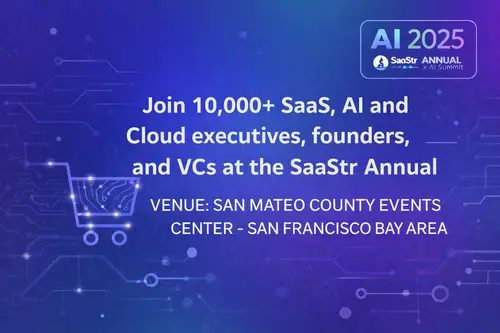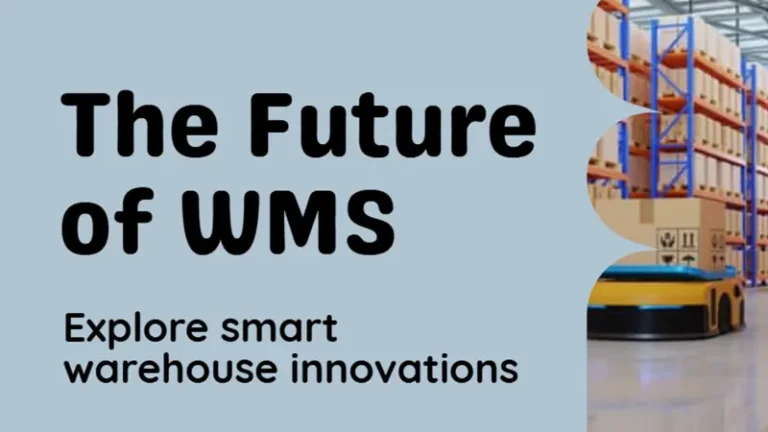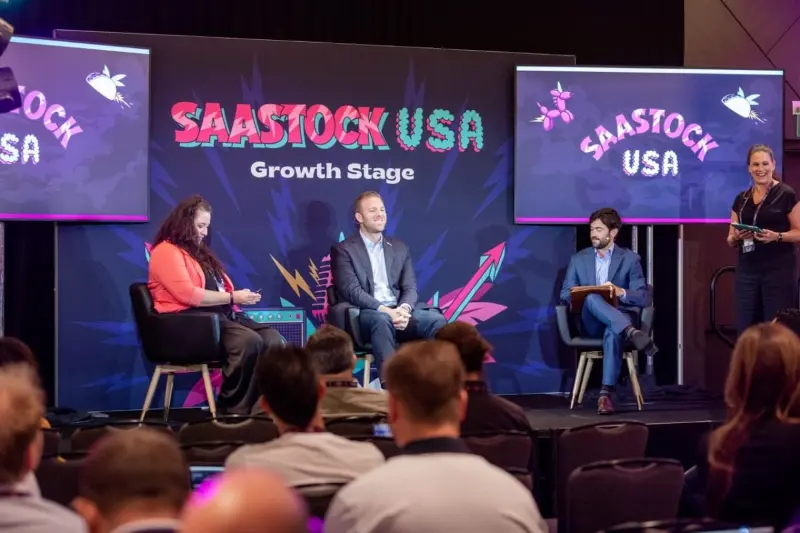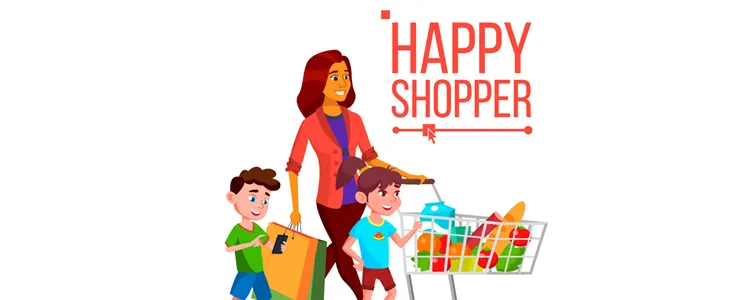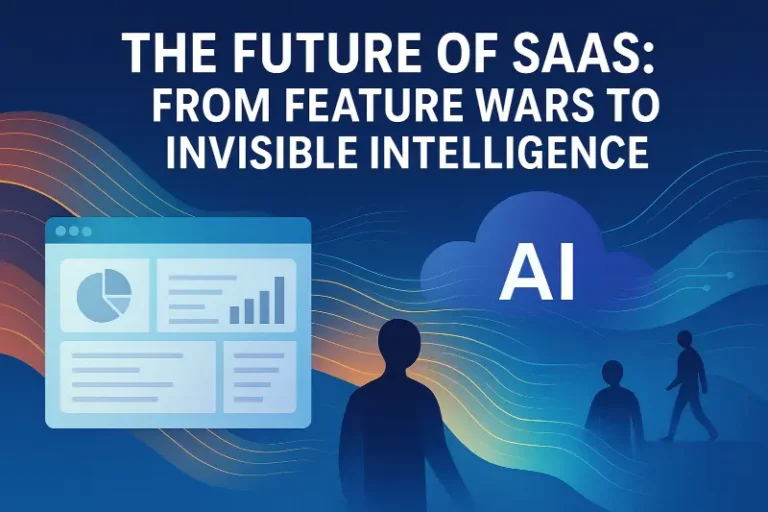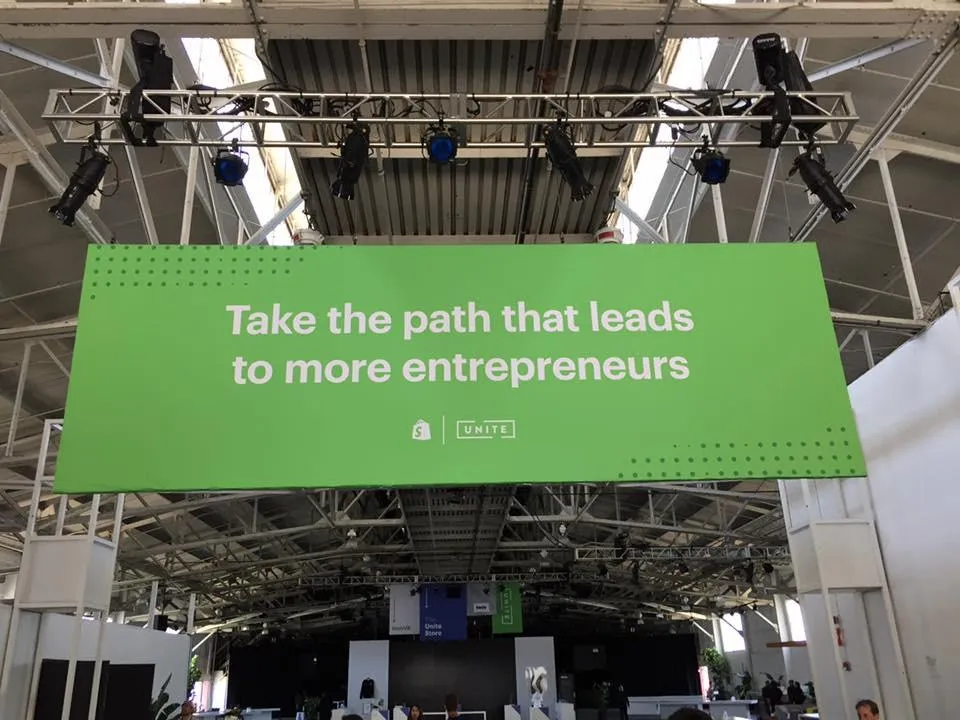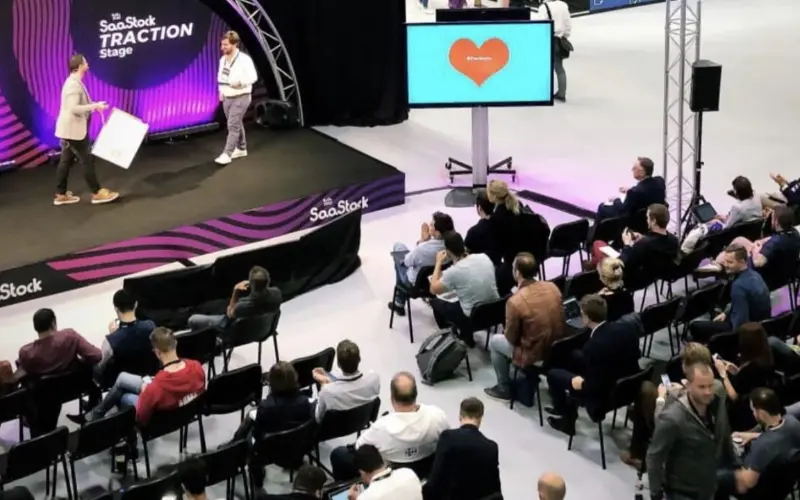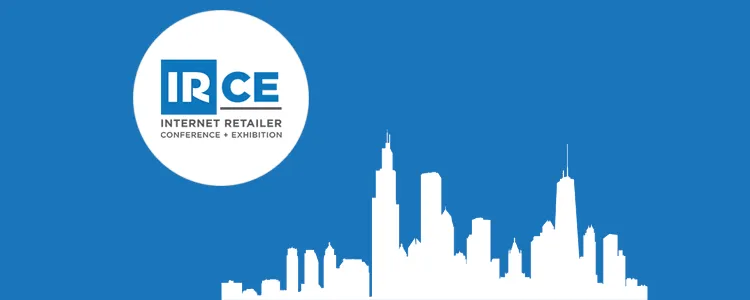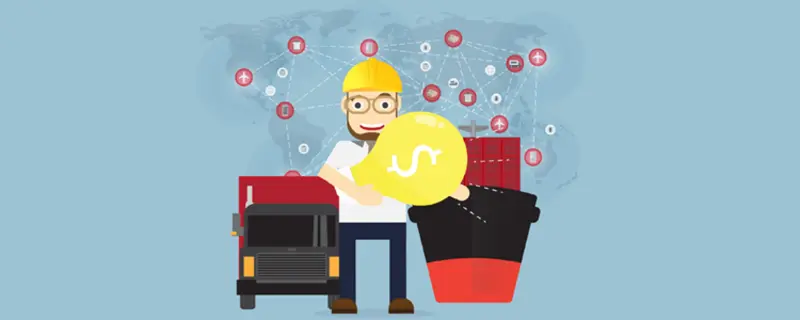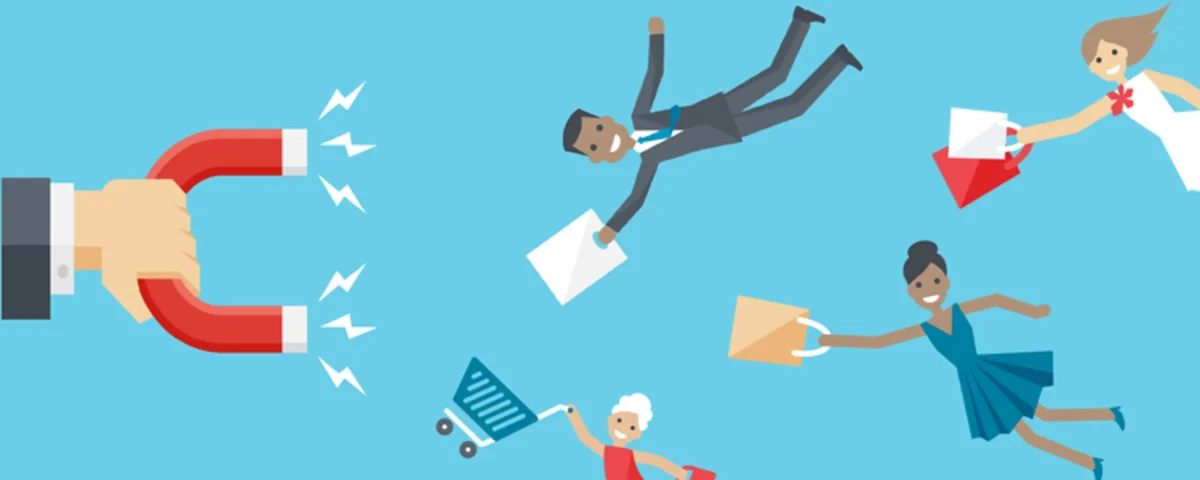The Lead Summit 2025
In this article
 1 minute
1 minute
May 28-29, 2025 | Pier 36, New York City
The Lead Summit brings together globally-recognized scaled brands, high-growth challenger brands, forward-looking retailers, and the next-gen tech enabling the future.
Across two dynamic days in vibrant NYC, you’ll make beneficial connections, learn & apply what’s working for other brands, and develop business-changing tech partnerships.
Slash Your Fulfillment Costs by Up to 30%
Cut shipping expenses by 30% and boost profit with Cahoot's AI-optimized fulfillment services and modern tech —no overheads and no humans required!
I'm Interested in Saving Time and Money
Turn Returns Into New Revenue
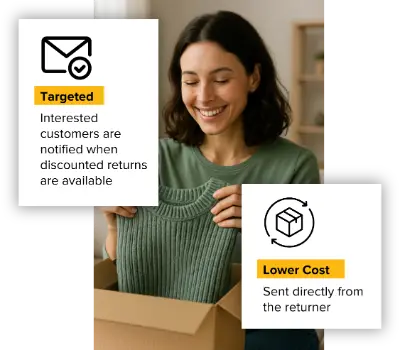
Top Holiday 2024 Consumer Shopping Trends
The 2024 holiday shopping landscape presents a complex picture of consumer behavior marked by notable contrasts across different shopper demographics. Despite economic uncertainties, holiday spending is reaching record levels, with consumers prioritizing family gifts while adapting their shopping strategies to navigate financial pressures.
We’ve scoured the top 2024 Holiday Shopping Surveys and predictions and summarized the research to help retailers gain insights into consumer spending, purchase intentions, and buying behaviors.
Economic Considerations and Budget Management
Many consumers will start holiday shopping earlier than usual to spread their budget, avoid crowds, and take advantage of early promotions. Despite this early start, many shoppers still expect to complete their purchases in December.
Consumer spending patterns reveal a significant divide between different groups. While some shoppers are reducing their holiday expenditures due to economic concerns, others are substantially increasing spending, reflecting growing economic disparities in the market. To prioritize their holiday budgets, many consumers make trade-offs by cutting back on other expenses like dining out and entertainment.
Free shipping and discounts remain the strongest motivators for purchases, while retailers’ reliability in meeting date-certain shipping promises continues to impact consumer loyalty significantly. Despite economic pressures, consumers can still be enticed to make impulse purchases with the right incentives.
Role of Digital Channels
Digital channels dominate holiday shopping, with most consumers discovering deals through online sources, social media, and e-commerce sites. Black Friday and Cyber Monday maintain their appeal, and home delivery remains the preferred fulfillment method for online purchases. Still, alternatives like in-store pickup are gaining popularity, especially among younger generations.
Generation Z has emerged as a particularly influential force in holiday shopping, demonstrating distinct preferences and behaviors. Their approach is predominantly digital-first, embracing self-checkout technology, mobile payments, and branded apps. This generation is heavily influenced by social media and digital content, with celebrity and influencer endorsements significantly impacting purchase decisions. They’re also unique in allocating more of their budget to self-gifting than other generations.
Slash Your Fulfillment Costs by Up to 30%
Cut shipping expenses by 30% and boost profit with Cahoot's AI-optimized fulfillment services and modern tech —no overheads and no humans required!
I'm Interested in Saving Time and MoneyPhysical Stores and Technology Integration
Physical retail plays a vital role in holiday shopping, with frequent in-store shoppers typically spending more overall. Stores attract customers through holiday displays, seasonal atmosphere, and exclusive products. Retailers are responding by integrating more technology into their physical spaces, creating a hybrid shopping experience that combines traditional and digital elements.
Gender-Based Spending Patterns
Gender-based shopping patterns show interesting shifts, with male shoppers leading in spending, particularly in categories like footwear (for themselves), electronics, and video games. Men are also showing greater enthusiasm for holiday travel and tech-enhanced shopping experiences.
Popular Gift Choices
Key product categories driving holiday sales include toys and books, video games, electronics, and personal care items, with gift cards maintaining their position as the most requested item. However, there’s surprisingly low interest in AI-powered gadgets, though millennials show the most enthusiasm for these products.
Travel Trends
Travel remains a significant component of holiday plans, though there’s a trend toward staying with friends and family, especially among cost-conscious travelers and baby boomers. Those who travel during the holidays tend to be bigger spenders across all categories, including gifts and entertainment.
Multi-Channel Shopping Journey and Sustainability
The holiday shopping journey has become increasingly complex and multi-channeled. Consumers typically begin with in-store experiences and word-of-mouth for product discovery, then move to online channels for research and comparison shopping. Thus, brands and retailers must have superior technologies such as order management and inventory systems. Different generations show distinct preferences throughout this journey, with baby boomers favoring in-store shopping and prioritizing convenience. In contrast, younger generations embrace mobile apps and show more interest in sustainable shopping and experiential gifts. All consumer groups’ priorities have shifted notably toward sustainability, with many shoppers willing to choose slower delivery methods to reduce their carbon footprint. They prefer brands demonstrating environmental commitment, though price sensitivity remains critical in decision-making.
Looking for a New 3PL? Start with this Free RFP Template
Cut weeks off your selection process. Avoid pitfalls. Get the only 3PL RFP checklist built for ecommerce brands, absolutely free.
Get My Free 3PL RFPInfluence of Generative AI
Marketing strategies are evolving, with traditional promotional tools like email newsletters having less impact than direct discounts and shipping offers. Generative AI is emerging as a valuable tool in enhancing the shopping experience, particularly among younger generations who find AI-driven recommendations helpful for making purchase decisions.
Summary
For retailers and marketers, the 2024 holiday season presents opportunities and challenges. Success depends on offering value, personalization, and memorable experiences across physical and digital channels while remaining sensitive to economic pressures affecting many consumers. The emphasis on tech integration, the growing importance of omnichannel experiences, and the increasing influence of younger generations will likely continue shaping retail behavior and customer loyalty. For brands that can successfully balance innovation with tradition while meeting diverse consumer needs and master ecommerce order fulfillment, this holiday season promises to be successful despite economic uncertainties.

Turn Returns Into New Revenue

SaaStock USA 2024
In this article
 1 minute
1 minute
May 13-15, 2024 | The Palmer Events Center, Austin TX
SaaStock is the world’s most impactful conference for the SaaS community. It brings together the highest concentration of SaaS decision makers, to build relationships and accelerate opportunities. From start to finish, SaaStock is all about facilitating human connections.
The agenda features some of the most exciting names in SaaS, sharing actionable insights that attendees can apply to their own SaaS journeys. Register for the event here.
Slash Your Fulfillment Costs by Up to 30%
Cut shipping expenses by 30% and boost profit with Cahoot's AI-optimized fulfillment services and modern tech —no overheads and no humans required!
I'm Interested in Saving Time and Money
Turn Returns Into New Revenue

Turning Today’s Smart Shoppers into Loyal Customers
When you ring up a sale with a brand new customer, whether online or in a store, is that the end of the relationship? Or is it just the beginning? In her best-selling book “The Membership Economy,” Robbie Kellman Baxter makes a clear case for the latter. The economics are profound, as it costs 7x more to acquire a new customer than to earn a repeat visit.
Brand loyalty is the key to growth for almost all retail categories. Whether your business relies heavily on repeat visits (e.g. sports apparel stores) or on low frequency purchases (e.g. a wedding reception decorations retailer), brand loyalty matters. You’d love for that soccer aficionado to shop every season. And you’d love for a recent bride to recommend your store, whether online or brick & mortar, to her friends when the time comes.
You build loyalty through great shopping experiences and customer touch points. One hundred years ago, those experiences began in stores, through interactions with store associates. And they continued with ongoing personal relationships. People’s lives centered on relatively small geographic areas, and retailers learned about their customers in person. Today, we are a mobile society. Store associates aren’t lifetime employees, and loyal shoppers visit multiple locations of their favorite retailers, including online.
The proliferation of customer touch points during the past 20 years has been immense. Meanwhile, your ability to truly know your customers, and how they interact with you, has become near impossible. Consider a shopper who just walked into one of your stores. Imagine if store associates knew the answers to all of these questions:
- Did she do any research before walking in? What products was she browsing?
- Has he shopped here previously? What did he buy and what brands does he like most?
- How happy was she with her last purchase here? Has she returned anything?
- Has he purchased from us online? Was it from our site? Or from a marketplace?
- Does she talk about our category, or about us, on social media?
- Have we interacted with him after the sale? Live chat? Contact Center? Chat bots?
Slash Your Fulfillment Costs by Up to 30%
Cut shipping expenses by 30% and boost profit with Cahoot's AI-optimized fulfillment services and modern tech —no overheads and no humans required!
I'm Interested in Saving Time and MoneyYour customer is capable of remembering all of it. And increasingly, as shoppers, they expect you to remember too — to know them across all the touch points they’ve experienced with you. And while technology is the driver behind channel proliferation, technology has not kept up with your need to know about all of those new types of interactions as your customers move from your site, to your store, to the telephone contact center. And back to the store again.
In this whitepaper, we will explore the challenges that retailers face in delivering omnichannel customer satisfaction as well as the solutions.
We will follow customers along the buyer journey.
How can you treat individual customers consistently, as if your brand truly knows them, regardless of whether they are on social media, buying on a marketplace, or in your store? And given that we can’t possibly know every single touch point, how can we, at a minimum, intelligently ensure that every interaction that customers have will be positive.
We will also, for many of the touchpoints within each step, cover the foundational capabilities you need in place, as well as those that will help you achieve omnichannel excellence.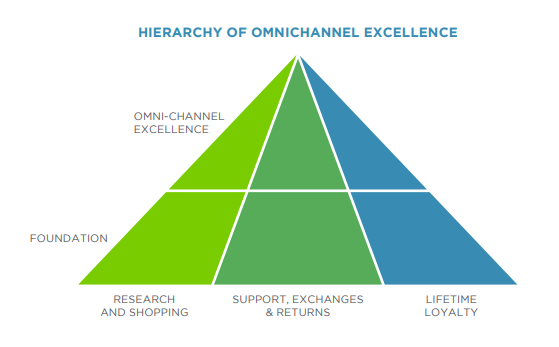
Customer Loyalty Building Blocks
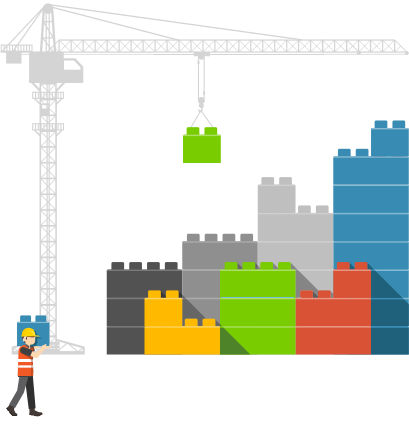
Intuitively, if you’re a retailer, you know that loyalty begins with the basics. Customers have needs, and they come to you to buy the products that will satisfy those needs.
- “I’m having a wedding, and I need party favors.”
- “Soccer season begins in 3 weeks, and I need practice gear.”
- “We’re headed to Mexico for the winter holiday, and I need SPF 30 swimwear.”
Looking for a New 3PL? Start with this Free RFP Template
Cut weeks off your selection process. Avoid pitfalls. Get the only 3PL RFP checklist built for ecommerce brands, absolutely free.
Get My Free 3PL RFPThe Basics
As a retailer, you help shoppers find the products that will make them happy, and you make the purchase process as easy as possible. You deliver where and when you promised you would. And, if your new customer has questions, or wants to return or exchange a product, you answer their questions quickly and make returns and exchanges simple too. You might even go a step further, with a basic loyalty program that rewards purchases.
Except, the basics aren’t simple anymore, because at every step of the buyer journey, customers are not just changing lanes on the highway, they’re switching from planes, to trains to automobiles… to SpaceX (see figure 1).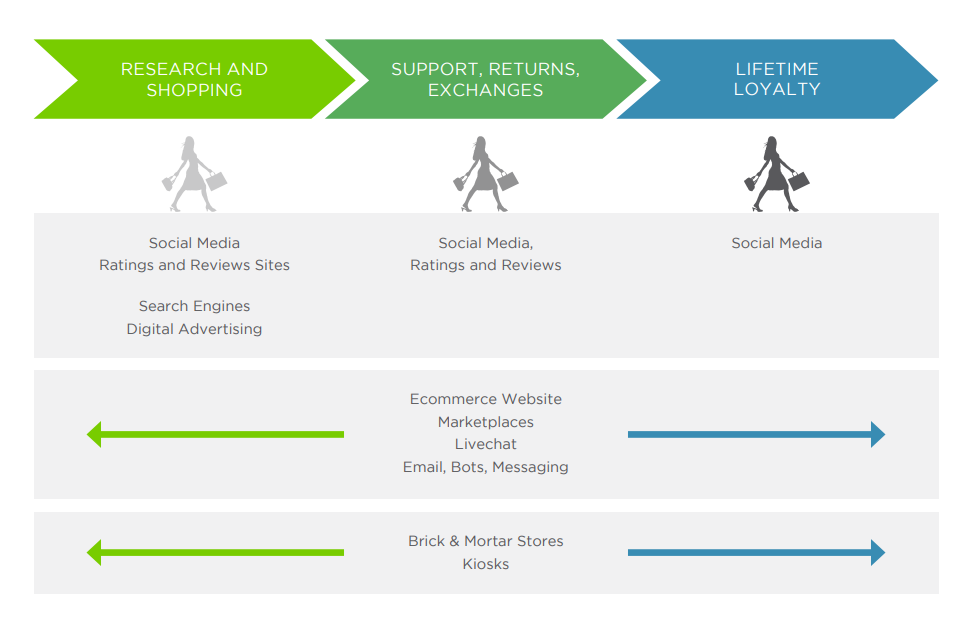
Shopping and Research
To serve your well-informed customers better, you need to know what they know. Before entering the store, what did they learn from google searches, reviews, twitter and your Facebook page? How does pricing and return policy vary between your ecommerce site, marketplaces, and your stores? Are your contact centers giving the same answers to the same questions as your live chat operators and your store associates?
Support, Returns & Exchanges
Return and exchange policy and execution are two of the most important factors consumers consider when choosing a retailer – whether buying online or in stores. In fact, according to the UPS Pulse of the Online Shopper™ study, 66% of shoppers review a retailer’s return policy before making a purchase. At a minimum, this must be a simple process. More advanced retailers are enabling customers to buy, modify an order, return and exchange across multiple contact channels. The easier we make it for customers, the more likely they are to return.
- Are each of your channels providing great support?
- Are they able to interact with a customer the same across all channels?
- Or is your company treating one customer like three:(1) the store customer, (2) the website customer, and(3) the call center customer?
Lifetime Loyalty
Loyalty programs are everywhere we turn. From buy 10, get 1 free punch cards, to rewards points, to discounts off the next purchase, retailers are in an arms race to keep customers coming back. And loyalty programs help you get to know your customers better too. Are you keeping your customers engaged with your brand after they walk out with their first purchase?
Scaling Made Easy: Calis Books’ Fulfillment Journey
Learn how Calis Books expanded nationwide, reduced errors, grew sales while cutting headcount, and saved BIG with Cahoot
See Scale JourneyThe Basics Matter
While there are a myriad of initiatives within each loyalty driver that we can enhance, retailers ignore the basics at their peril:
- 89% of customers have stopped buying from online stores after they’ve experienced poor service (source: Right Now)
- A 5% reduction in customer abandonment rate can increase profitability by 25% – 125%. (Source: “Leading on the Edge ofChaos,” Murphy & Murphy)

Turn Returns Into New Revenue

Shopify Unite 2019
In this article
 1 minute
1 minute
June 18-20, 2019 | Beanfield Centre, Toronto, Canada
At Shopify Unite, partners and developers from around the world come together for three days of conversation about the future of commerce, connection to like-minded peers, and celebration of shared achievements. Attendees will hear from Shopify leadership, get an exclusive glimpse at product roadmaps, and explore the opportunity ahead.
If you’re a Shopify Partner or Shopify Developer, this conference is for you!
This three-day conference is for Shopify Partners and Shopify Developers who build apps and custom integrations, or who work with Shopify merchants providing services like web design, development, marketing, business strategy, and more.
Register for the conference now!

Turn Returns Into New Revenue

Traction Conference 2019
In this article
 1 minute
1 minute
Aug 7 – 8, 2019 | JW Marriott Parq, Vancouver
Traction Conference brings you actionable strategies and tactics for supercharging your growth, straight from founders and leaders of some of the fastest growing companies like Google, Twentieth Century Fox, Reddit, LinkedIn, Slack, Trello, Github, New Relic, Box, SendGrid, Grammarly, Bumble and much more.
Plus you get to network with and get on a first-name basis with Fortune 500 leaders, high-growth startup founders, leading investors, and major media.
Slash Your Fulfillment Costs by Up to 30%
Cut shipping expenses by 30% and boost profit with Cahoot's AI-optimized fulfillment services and modern tech —no overheads and no humans required!
I'm Interested in Saving Time and Money
Turn Returns Into New Revenue

Retailers Need a 360-degree Customer View to Win: Turning Today’s Smart Shoppers into Loyal Customers
Why Retailers Need a 360-degree Customer View to Win in the Omnichannel Age
Introduction
When you ring up a sale with a brand new customer, whether online or in a store, is that the end of the relationship? Or is it just the beginning? In her best-selling book “The Membership Economy,” Robbie Kellman Baxter makes a clear case for the latter. The economics are profound, as it costs 7x more to acquire a new customer than to earn a repeat visit.
Brand loyalty is the key to growth for almost all retail categories.
Whether your business relies heavily on repeat visits (e.g. sports apparel stores) or on low frequency purchases (e.g. a wedding reception decorations retailer), brand loyalty matters. You’d love for that soccer aficionado to shop every season. And you’d love for a recent bride to recommend your store, whether online or brick & mortar, to her friends when the time comes.
You build loyalty through great shopping experiences and customer touch points.
One hundred years ago, those experiences began in stores, through interactions with store associates. And they continued with ongoing personal relationships. People’s lives centered on relatively small geographic areas, and retailers learned about their customers in person. Today, we are a mobile society. Store associates aren’t lifetime employees, and loyal shoppers visit multiple locations of their favorite retailers, including online.
The proliferation of customer touch points during the past 20 years has been immense.
Meanwhile, your ability to truly know your customers, and how they interact with you, has become near impossible. Consider a shopper who just walked into one of your stores. Imagine if store associates knew the answers to all of these questions:
- Did she do any research before walking in? What products was she browsing?
- Has he shopped here previously? What did he buy and what brands does he like most?
- How happy was she with her last purchase here? Has she returned anything?
- Has he purchased from us online? Was it from our site? Or from a marketplace?
- Does she talk about our category, or about us, on social media?
- Have we interacted with him after the sale? Live chat? Contact Center? Chat bots?
Your customer is capable of remembering all of it. And increasingly, as shoppers, they expect you to remember too — to know them across all the touch points they’ve experienced with you. And while technology is the driver behind channel proliferation, technology has not kept up with your need to know about all of those new types of interactions as your customers move from your site, to your store, to the telephone contact center. And back to the store again.
Looking for a New 3PL? Start with this Free RFP Template
Cut weeks off your selection process. Avoid pitfalls. Get the only 3PL RFP checklist built for ecommerce brands, absolutely free.
Get My Free 3PL RFPIn this whitepaper, we will explore the challenges that retailers face in delivering omnichannel customer satisfaction as well as the solutions.

Turn Returns Into New Revenue

Meet Pulse Commerce at IRCE 2019
In this article
 1 minute
1 minute
IRCE’s conference offers strategic educational sessions on the topics that matter to you most. With over 130 sessions covering various topics and trends, your needs are met at IRCE. The exhibit hall features 600+ top solution and technology vendors, ready to help your business succeed in every facet.
If you are making your way to IRCE this year, come stop by Pulse Commerce’s booth #1111. We invite all growth-minded merchants to come talk to us about industry best practices and explore how we can improve their business performance.
Slash Your Fulfillment Costs by Up to 30%
Cut shipping expenses by 30% and boost profit with Cahoot's AI-optimized fulfillment services and modern tech —no overheads and no humans required!
I'm Interested in Saving Time and Money
Turn Returns Into New Revenue

7 Ways Retailers Can Make Free Shipping Profitable
One of the most important and potentially expensive decisions that an online retailer can make is whether or not to offer free shipping. Over 2 million Google searches each month in the United States include the phrase “free shipping.” Most online merchants have at least considered offering it. It’s a tough decision because shipping is expensive — Amazon’s shipping expense was $16.2 billion in 2016, over 17 percent of its total order value.
How can a retailer afford an additional 15 to 20 percent expense?
The good news is that you can.
Begin with a simple A/B test, in which a random sample of shoppers — 10 to 50 percent — is offered free shipping. Compare the control group with the test group to see the change.
Then, track three outcomes to determine the real cost of offering free shipping.
- Change in conversion rate. For example, a change from 5 percent to 6 percent is a 20 percent increase, or 1.2 expressed as a decimal. In the equation below, it’s variable A.
- Change in average order value. An AOV improvement from $50 to $51 is a 2 percent increase, or 1.02 expressed as a decimal — variable B, below.
- Change in gross margins. If the control group gross margin is 50 percent, and the test group gross margin is 35 percent, then the gross margin decrease is 30 percent: -15% ÷ 50% = -30%.This is -0.3 expressed as a decimal. It’s variable C, below.
Slash Your Fulfillment Costs by Up to 30%
Cut shipping expenses by 30% and boost profit with Cahoot's AI-optimized fulfillment services and modern tech —no overheads and no humans required!
I'm Interested in Saving Time and MoneyNext, compute the percentage change in profit from offering free shipping, as follows.
% Change in profit (x) = [(A * B * (1+ C)) – 1] * 100
x = [(1.2 * 1.02 * (1 + (-0.3))) – 1] * 100
x = -14.3%
The change in profit from free shipping in this case is -14.3 percent.
What follows are seven strategies and tactics to turn free shipping from a -14.3 percent cost center into a profit increase.
7 Ways to Profit from Free Shipping
Set minimum order value. By adding a minimum threshold for free shipping, you can increase AOV because shoppers will have an incentive to increase basket size. You can also reduce the negative impact on margins because free shipping will be offered on fewer orders, and thus reduce situations where shipping cost represents more than 20 percent of the total order value.
Step 1: Choose a threshold. A good starting point is to add 10 to 15 percent to your current AOV. For example, if AOV is $50, offer free shipping on orders over $55
Step 2: Run the A/B test again. Your results could look like this:
- Conversion rate increased from 5 percent to 5.5 percent — 1.1, variable A.
- AOV increased from $50 to $57.50 — 1.15, variable B.
- Gross margin declined from 50 percent to 43 percent — -.14, variable C.
Now, the change in profit from free shipping is +8.8 percent:
% Change in profit (x) = [(A * B * (1+ C)) – 1] * 100
x = [(1.1 * 1.15 * (1 + (-0.14))) – 1] *100
x = 8.8%
Step 3: Supersize it. Adding a minimum of $55 for free shipping increases profit by 8.8 percent. Thus, we should heavily promote it. Here are three ideas.
- “You almost qualify.” When shoppers add an item to the cart, inform them how much more they need to spend to qualify for free shipping
- “Take advantage of your free shipping.” Once free shipping is earned, remind shoppers that they can take advantage of the free shipping to buy more.
- “Look how much you saved!” Remind shoppers at checkout how much money they are saving with free shipping
Looking for a New 3PL? Start with this Free RFP Template
Cut weeks off your selection process. Avoid pitfalls. Get the only 3PL RFP checklist built for ecommerce brands, absolutely free.
Get My Free 3PL RFPUse only ground shipping. Change the equation by offering free shipping only via your least expensive shipping option, such as USPS Flat Rate Boxes or UPS Mail Innovations. The promotion for this could be: “Free economy shipping on orders of $55 or more.”
According to 2017 survey by Internet Retailer and Bizrate Insights, nearly 90 percent of online shoppers say they are willing to wait longer for delivery of an order in exchange for free shipping. Most shoppers are likely to choose the free shipping option.
By using only ground shipping, you could cut your free shipping expense by more than half.
Offer low flat-rate shipping. Offer a flat-rate shipping charge on all orders. Amazon Prime Pantry does this well by leveraging consumer psychology to drive basket sizes up.
This approach has many advantages. Customers cover shipping expense on smaller, lower margin orders. Shoppers are incented to buy more, since additional items ship for free. As the order size increases, overall gross margin goes up, covering the incremental shipping cost.
Include shipping costs in product prices. Consider the effect on conversion rates from these two offers:
- Option 1: $30 + $5 shipping charge.
- Option 2: $35 with free shipping.
Bill D’Alessandro, of Rebel CEO, a consulting firm, ran this very test for a skincare product. The conversion rate for option 2 was twice that of option 1. This approach can work well for items that are unique and hard to price shop across multiple sites.
How do you include shipping costs in item prices? One approach is to change the pricing of items below the free shipping threshold to include a portion of expected shipping cost.
Say a merchant offers free shipping for orders of $75 or more. For a $25 item, add 33 percent ($25/$75) of the shipping cost to the item price. For a $10 item, add 13 percent ($10/$75) of the shipping cost to the item price.
The $25 item would now be offered at $28. The $10 item now has a price of $11.30. You still offer free shipping, but you’ll recoup a portion of the costs. Customers may prefer to pay $11.30 with free shipping versus $10 with $1.30 shipping.
Exclude items from free shipping. Reduce the negative margin impact of free shipping by:
- Offering free shipping only on high volume items with low shipping costs.
- Excluding low margin items from free shipping altogether.
- Excluding heavy and bulky items with high shipping costs from free shipping.
Scaling Made Easy: Calis Books’ Fulfillment Journey
Learn how Calis Books expanded nationwide, reduced errors, grew sales while cutting headcount, and saved BIG with Cahoot
See Scale JourneySubstitute service types. If you are offering free ground shipping, and charging an additional fee for expedited 2-day shipping, avoid displaying on your website the carrier name and specific service type that you intend to use.
In many cases, you’ll be able to use economical ground shipping to meet even the 2-day shipping requirements for expedited orders. For deliveries in close proximity to your distribution centers and drop shippers, for example, you can ship using the cheapest ground option and still meet the delivery window for some of your expedited 2-day orders and pocket the savings.
Sell via Amazon Prime and FBA. Gain access to over half of U.S. households by offering select products through Amazon Prime while using Fulfillment by Amazon to cut fulfillment costs. While FBA is certainly not free for merchants, some find that the efficiencies and volume gained through Amazon Prime and FBA can cover the cost of free shipping.
Not a Cash Sink
In short, free shipping doesn’t have to be a cash sink. Smart retailers of all sizes use free shipping as a lever to increase conversions and average order values while minimizing its negative impact on profits.
Moreover, free shipping can also reduce customer service costs for returns. Customers often request to be reimbursed for shipping when returning an item. But there’s nothing to reimburse on free shipping!
For more than 40 ways to reduce your shipping costs and be profitable, check out this ultimate guide to profitable free shipping.

Turn Returns Into New Revenue

7 Ways to Turn Post-Purchase Interactions into New Sales
Most retailers put a lot of time and effort into attracting new customers. It makes sense: you need customers to buy your products and sustain your business. However, generating more sales from existing customers is a more efficient, less expensive way to grow.
The probability of selling to an existing customer is 60 percent to 70 percent, compared with the 5 percent to 20 percent chance of selling to a new customer, according to the White House Office of Consumer Affairs.
Slash Your Fulfillment Costs by Up to 30%
Cut shipping expenses by 30% and boost profit with Cahoot's AI-optimized fulfillment services and modern tech —no overheads and no humans required!
I'm Interested in Saving Time and MoneyEvery dollar spent retaining or reselling goes further than one spent to attract new customers.
I invite you to reconsider the post-purchase customer as a prospect for continued, expanded business. In many ways, they’re an ideal prospect — you know what products they like, you know that they like your brand, and you have their trust.
Existing customers are also a great source of new prospects: 42 percent of online customers find recommendations from friends and family influential, and 23 percent are influenced by social media recommendations, according to BigCommerce’s Consumer Shopping Habits Study.
7 Ways to Turn Post-Purchase Interactions Into New Sales
The moment a customer completes a purchase, you should think of them as a new prospect, with opportunities for add-ons and additional sales on the horizon. Each interaction is an opportunity for more sales, more revenue per purchase, and more referrals.
1. Make good use of your order tracking page.
Between purchase and delivery, customers who track their orders visit the order tracking page an average of 3.1 times per order, according to the 2017 Narvar Post-Purchase Benchmark. They’re also three times more likely to click through a marketing asset on that page than a regular marketing email. Customers who visit the tracking page are excited about your products. Make good use of that prime real estate with targeted ads for products that would complement their recent purchase.
2. Answer their questions.
This might seem straightforward, but too many retailers are missing this crucial foundation. After purchase, customers expect you to be just as helpful as when you were trying to close the sale. At the simplest level, your website needs an easy-to-find FAQ about topics like shipping, refunds and exchanges.
Ideally, customers should be able to get an answer via any channel: phone, live chat, email, social media, or even in-store. According to Parature, 43 percent of customers cite being passed from agent to agent as a top aspect of bad customer service. Getting this right requires an an omnichannel order management system (OMS) that centralizes information for every agent. A customer standing in your store doesn’t want to hear that they have to call the 800 number, and now they won’t have to.
Looking for a New 3PL? Start with this Free RFP Template
Cut weeks off your selection process. Avoid pitfalls. Get the only 3PL RFP checklist built for ecommerce brands, absolutely free.
Get My Free 3PL RFP3. Order modifications: anywhere, anytime.
With the advent of sophisticated order fulfillment software, customers expect you to locate and modify their order right up until the moment it ships. Order management software can solve this challenge, integrated with OMS so that service representatives don’t have to call the warehouse to make changes.
It’s a worthwhile investment. When customers can modify their order, they’re more likely to buy add-ons, knowing that their products will arrive together. You also save on refunds and exchanges by eliminating shipping products that customers don’t want. Finally, you enhance your relationship with customers, who trust you to get them exactly what they want.
4. Provide smooth and easy returns.
Returns are unavoidable. According to the marketing experts at Invesp, 30 percent of products purchased online are returned. A full 35 percent of those returns aren’t due to any error, but just because a customer decided not to keep the item. Turn this potentially negative situation into an opportunity by delivering an outstanding, frictionless experience.
Customers want to return or exchange a product via any channel, not just the one where it was purchased. If they bring a sweater they purchased online into their local store, a store employee should be able to process the exchange, then delight the customer by offering the replacement item for pickup or quick shipment. An OMS makes this possible by centralizing all orders, inventory, fulfillment and returns.
5. Make it personal.
Once a customer purchases from your brand, you suddenly have an enormous marketing advantage: you know what they like. Fifty-nine percent of shoppers want personalized marketing online, including special offers, exclusive coupons or advertising for products they’re interested in, according to the Accenture Personalization Survey. Use what you know to market related products via email, direct mail, social media and other channels, and start soon after purchase while your brand is top of mind.
6. Don’t forget the packaging.
Let’s say that 20 percent of your customers open each of your marketing emails — pretty good! How many open the package that contains their order? More like 100 percent. Packing materials are an excellent marketing asset, and not to be overlooked.
Beyond the baseline — delivering the order on-time, complete and undamaged — you can delight customers with enclosed free samples or discount offers. Then make it easy for them to follow up. Set up a special short URL for the offer so they can place their order quickly while they’ve got it on their mind.
7. Get the most out of happy customers.
Loyal customers don’t only bring additional revenue, they can also bring in new customers. Consider implementing NPS, the simple survey that asks customers, “How likely are you to recommend this company to a friend?” Identify happy customers, then follow through: offer referral perks or encourage them to share their favorite products on social media.
Scaling Made Easy: Calis Books’ Fulfillment Journey
Learn how Calis Books expanded nationwide, reduced errors, grew sales while cutting headcount, and saved BIG with Cahoot
See Scale JourneyLoyalty programs are another great option, although they can be complex to administer. According to Accenture, members of loyalty programs generate 12 percent to 18 percent more revenue than customers who aren’t members. Loyalty programs keep customers actively engaged and drive repeat purchases, social media buzz and new referrals.
Conclusion
Getting the most out of your post-purchase customer interactions has two major parts: a well-designed and well-executed marketing strategy, and an omnichannel delivery and service commitment. Both pieces are necessary to drive higher customer retention, loyalty and referrals, and overall revenue. Businesses that adopt omnichannel strategies achieve over 90 percent greater year-over-year customer retention rates compared to those that don’t.

Turn Returns Into New Revenue



